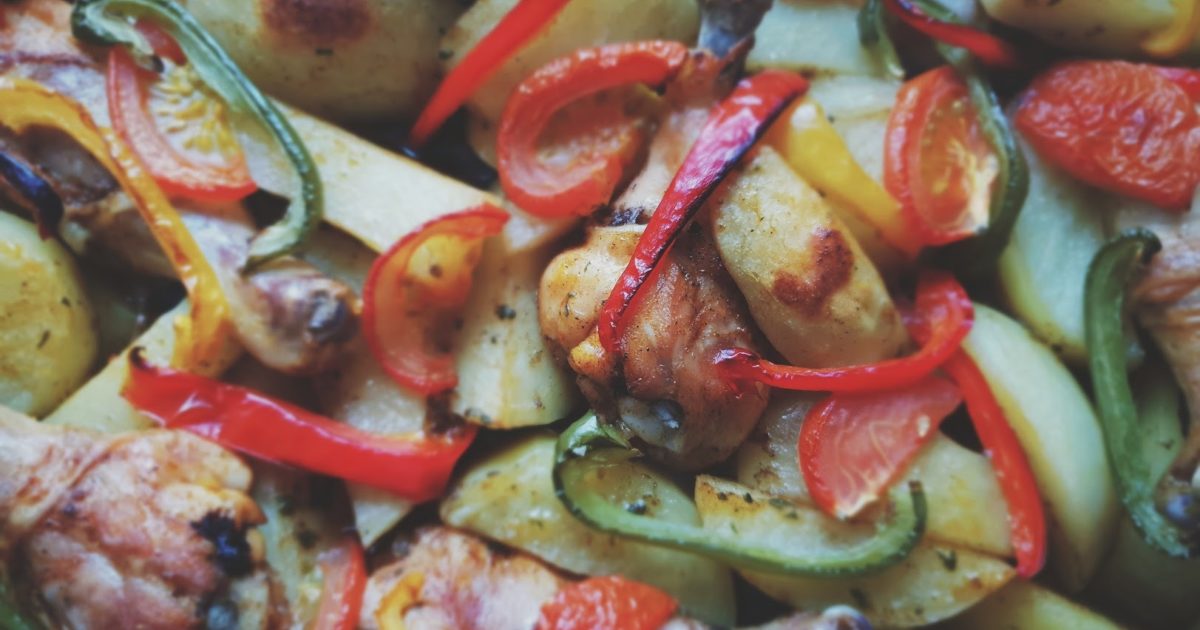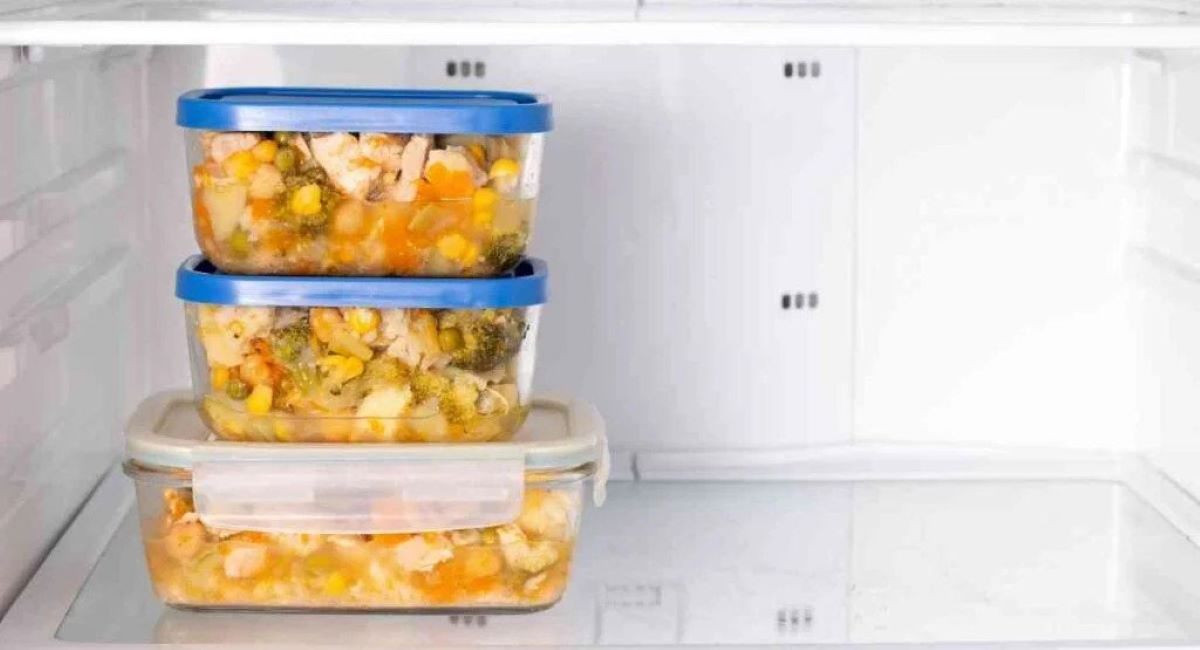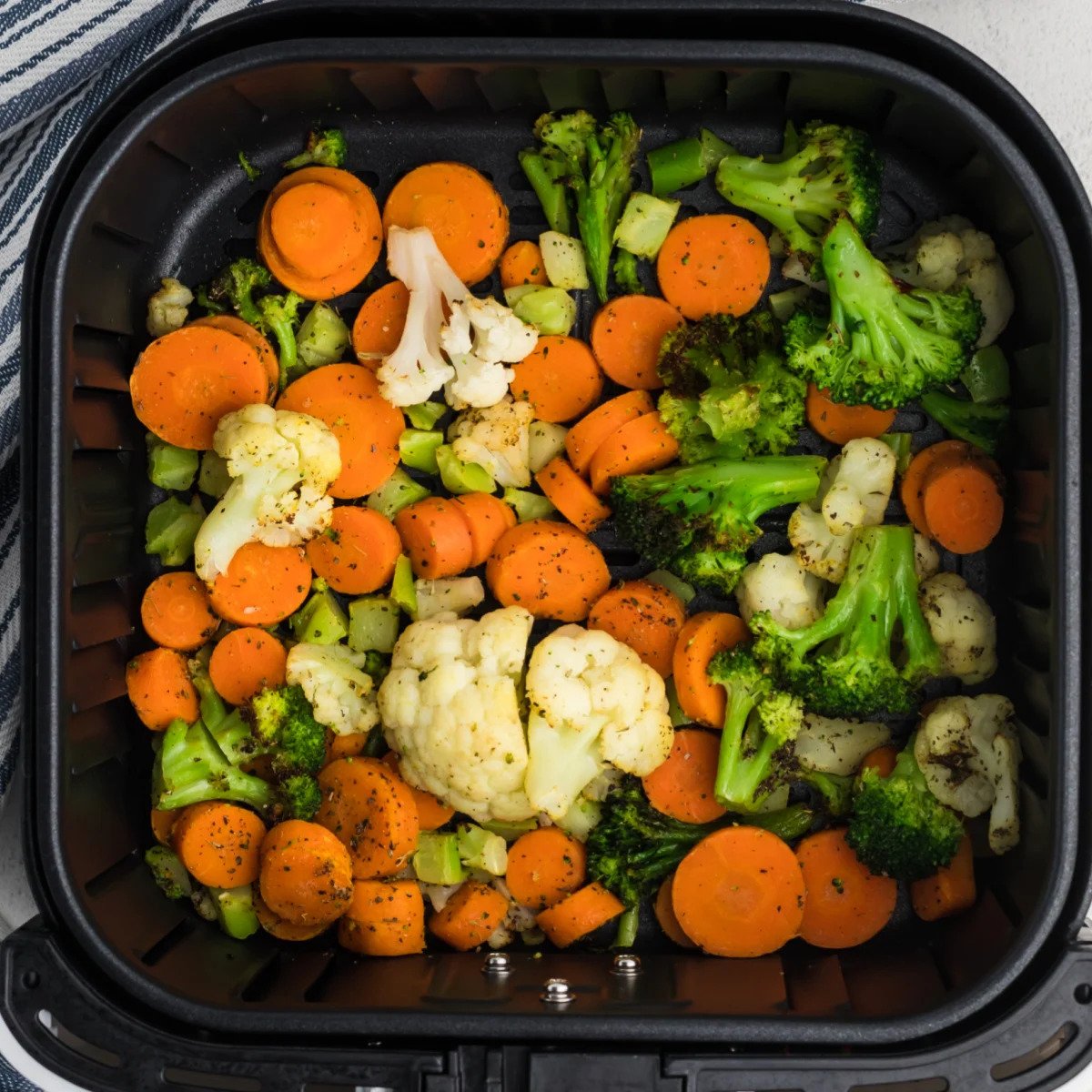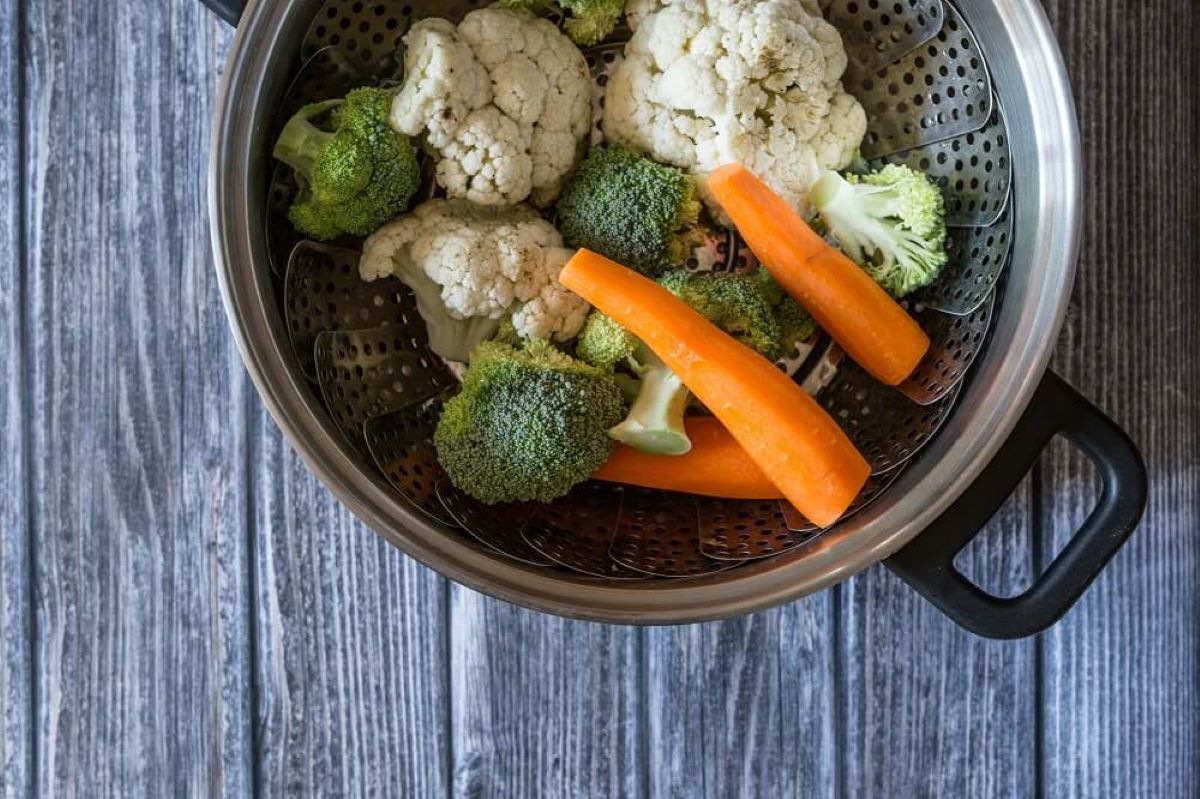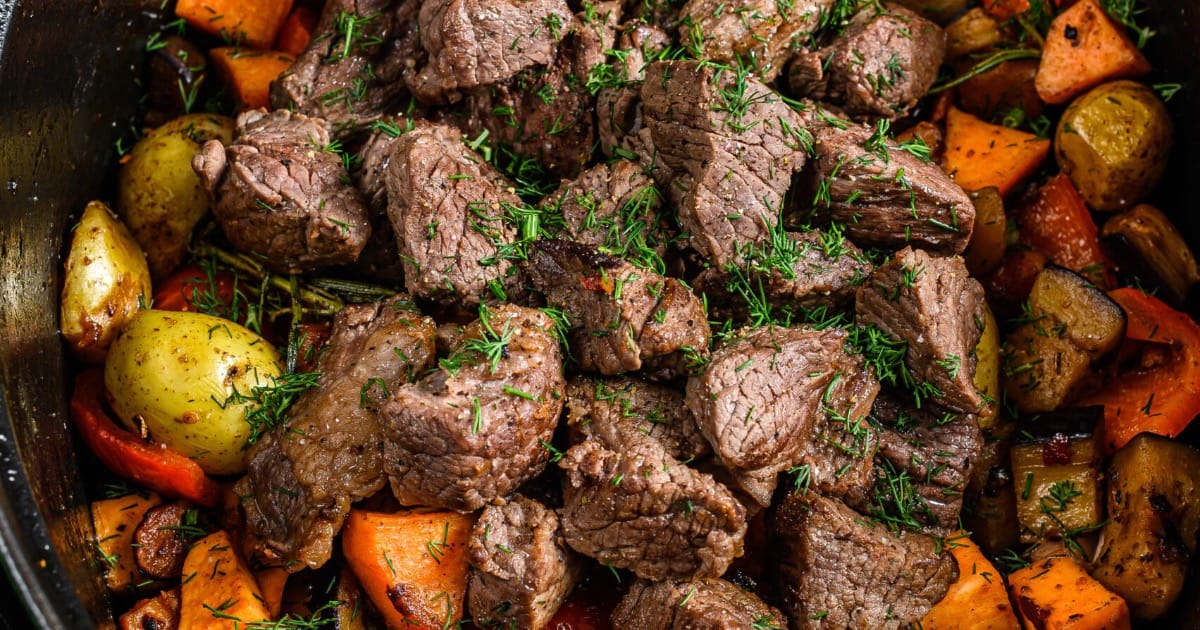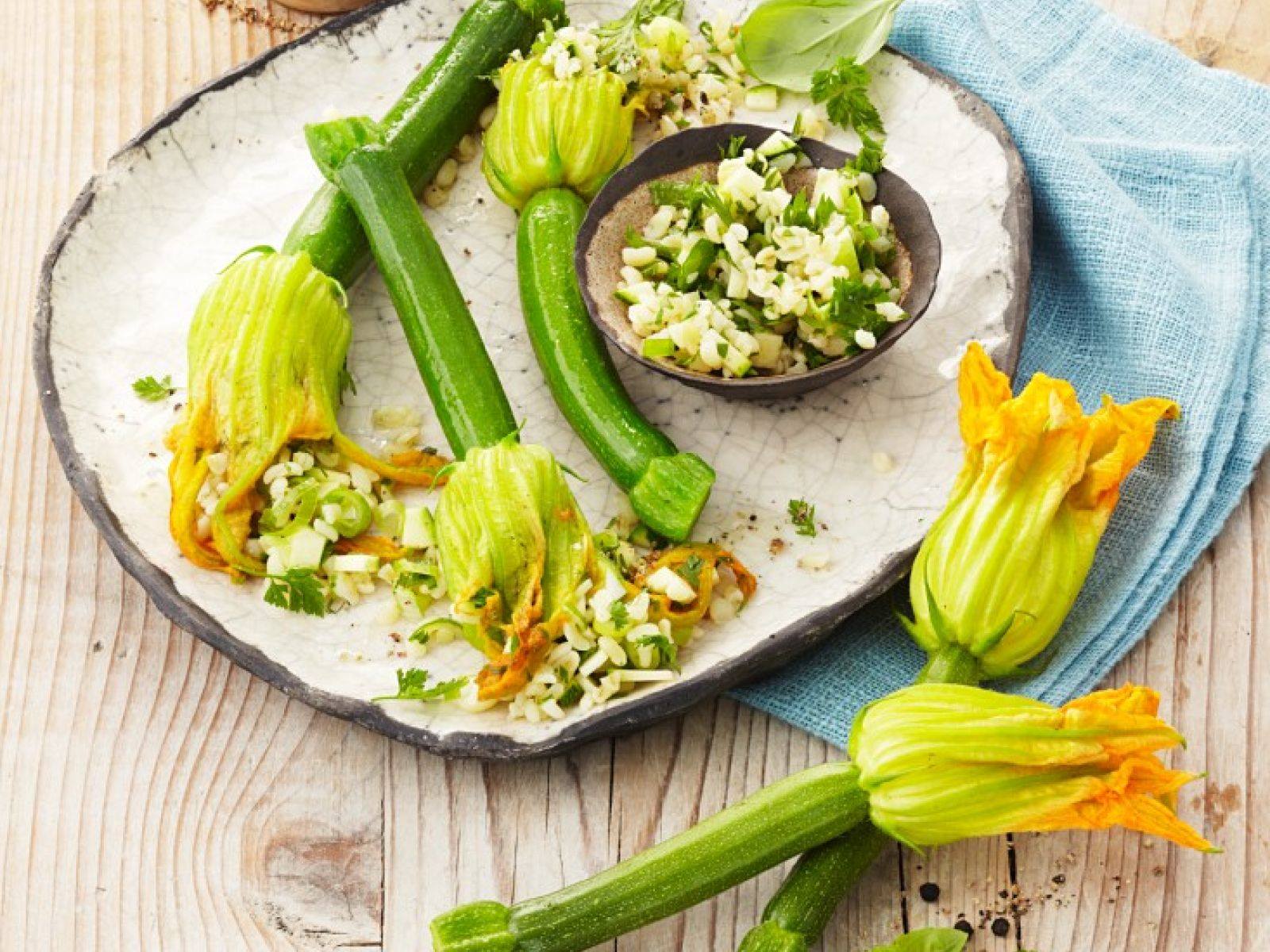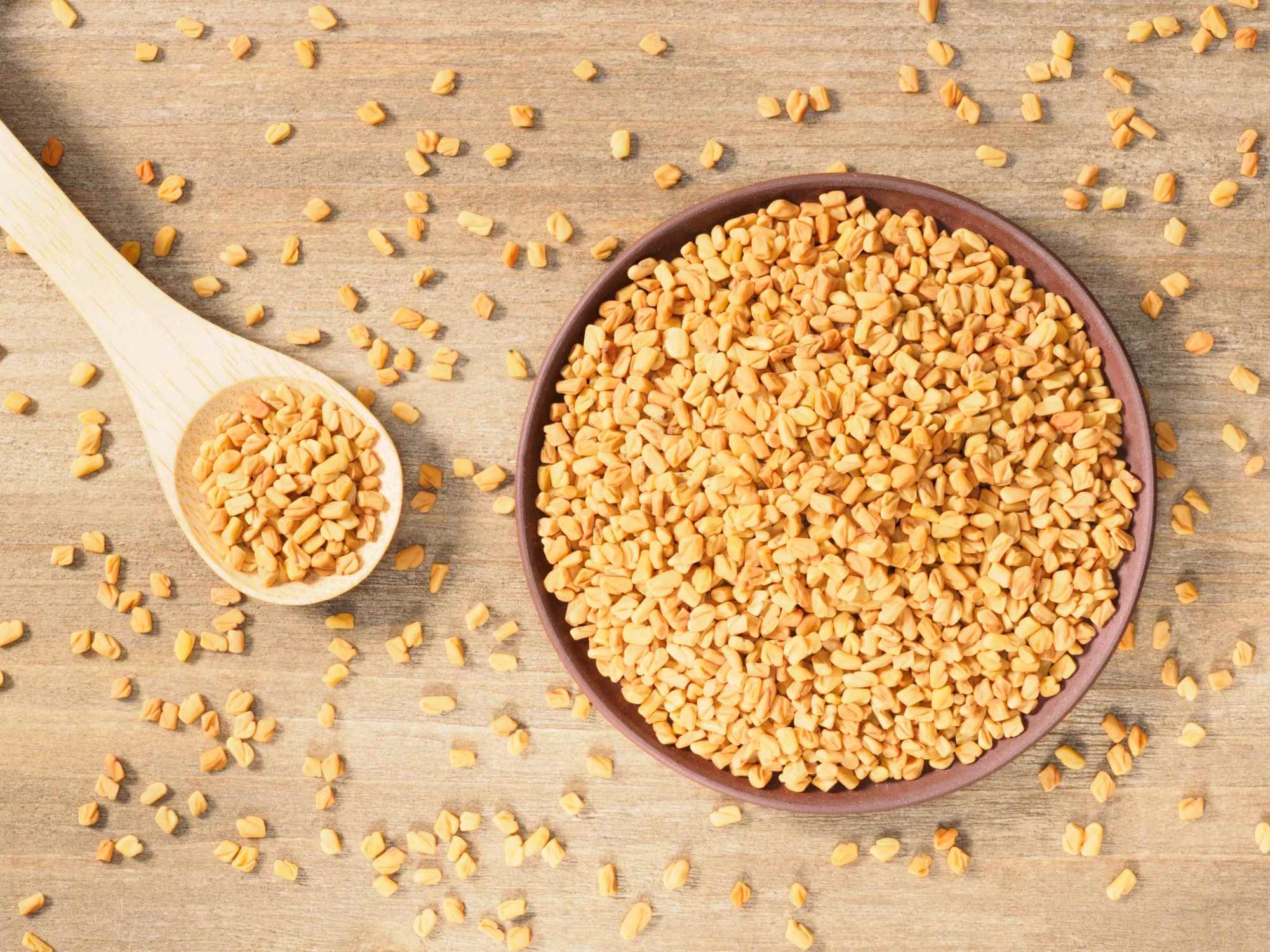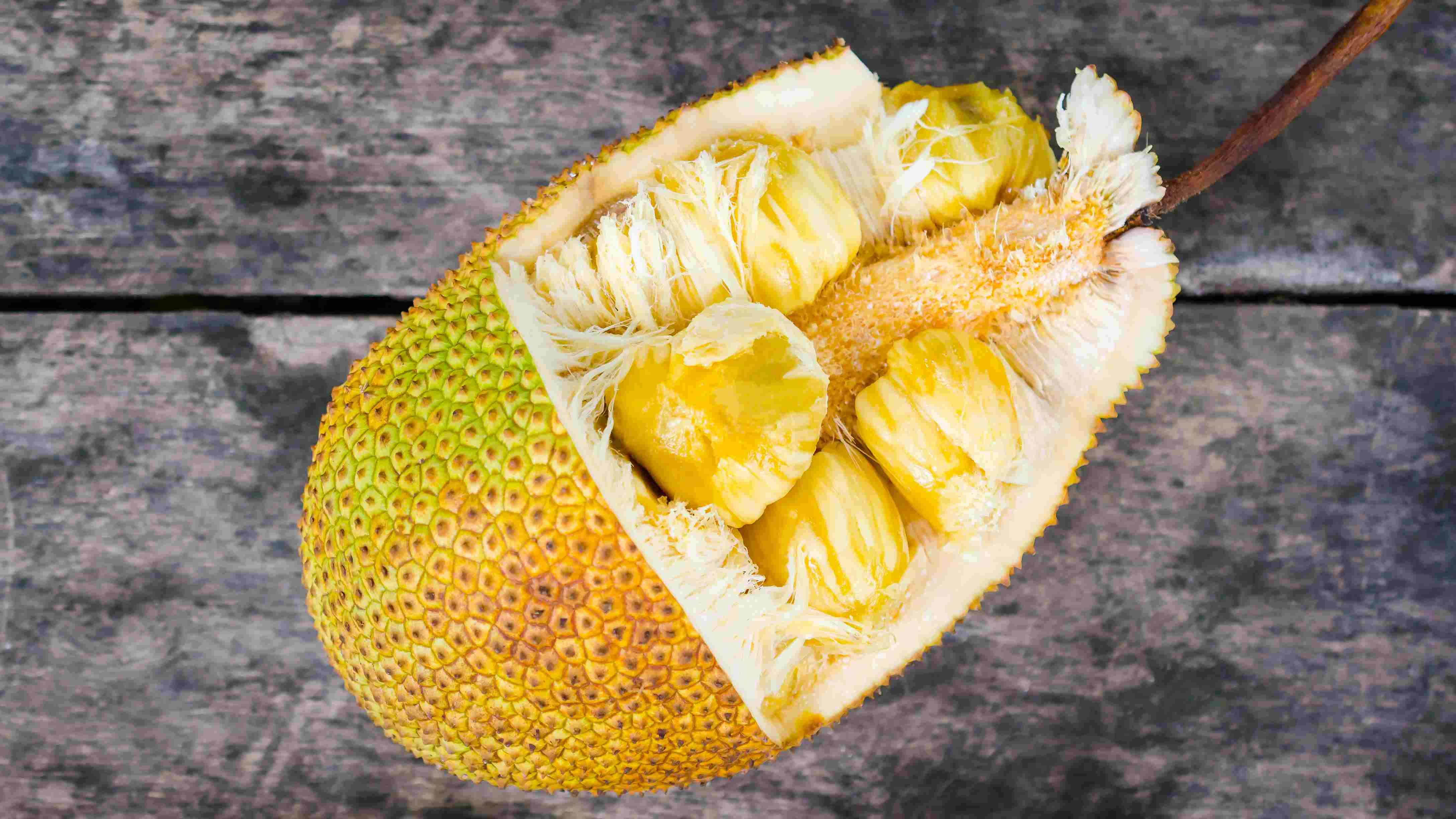Home>Gardening News and Trends>Latest News>How To Cook Vegetables On Stove
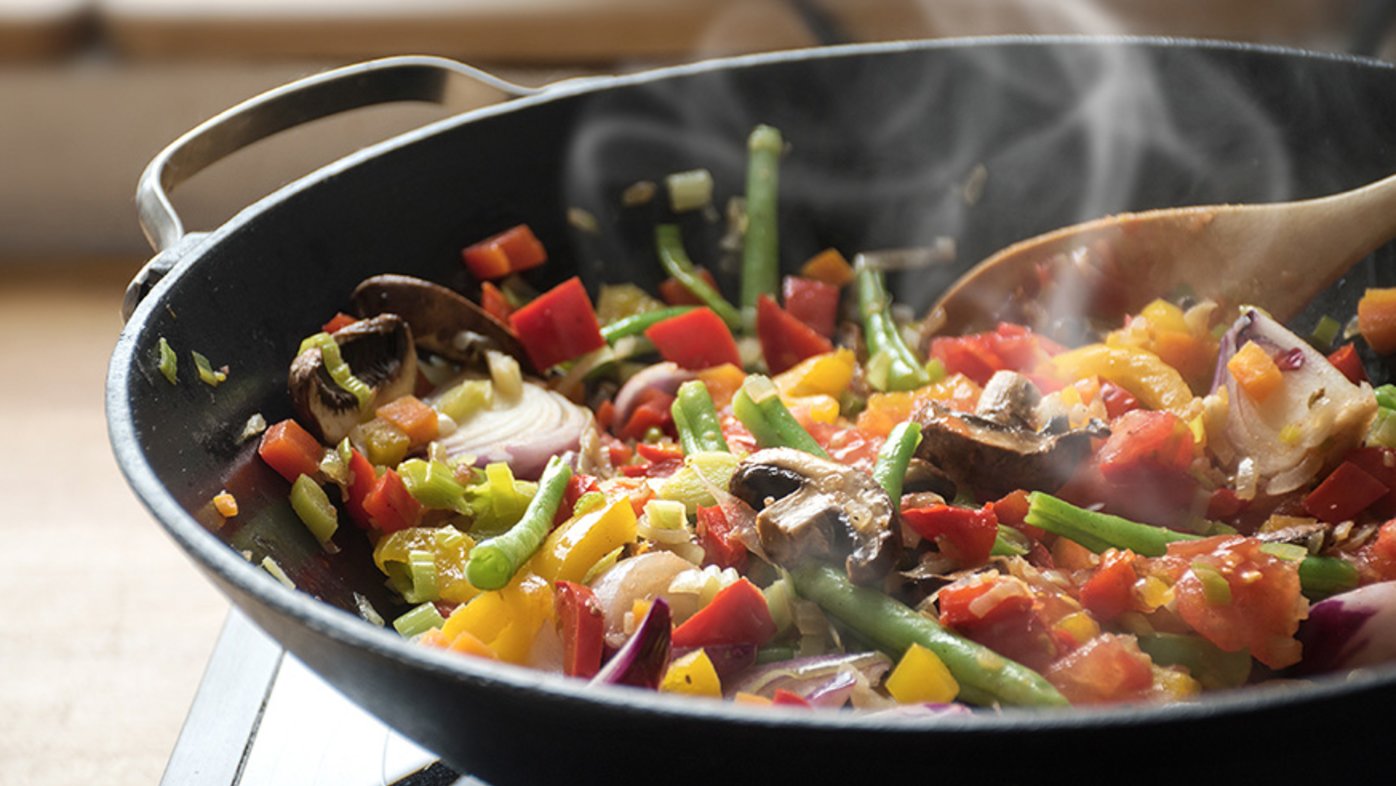

Latest News
How To Cook Vegetables On Stove
Modified: January 22, 2024
Learn how to cook vegetables on the stove with our latest news and tips. Discover the best techniques and recipes for delicious and nutritious veggie dishes.
(Many of the links in this article redirect to a specific reviewed product. Your purchase of these products through affiliate links helps to generate commission for Chicagolandgardening.com, at no extra cost. Learn more)
Table of Contents
Introduction
Welcome to the wonderful world of vegetable cooking! Whether you’re a seasoned chef or someone who is just starting to explore the culinary realm, knowing how to cook vegetables on the stove is a fundamental skill that opens up a world of possibilities in the kitchen.
Cooking vegetables on the stove is a versatile and practical method that allows you to retain the nutritional value, flavors, and textures of fresh produce. With a few simple techniques, you can transform raw veggies into delicious and nutritious meals or side dishes.
Not only are stovetop cooking techniques quick and easy, but they also provide a great way to experiment with different flavors and culinary traditions. From boiling and steaming to sautéing and stir-frying, there are countless ways to prepare vegetables on the stovetop, each offering its unique benefits and taste profiles.
This guide will walk you through the process of choosing the right vegetables, preparing them for cooking, and exploring various stovetop techniques. By the end, you’ll have the knowledge and confidence to create flavorful and nutritious vegetable dishes that will impress your family and guests.
So, put on your apron, sharpen your knife, and let’s dive into the art of cooking vegetables on the stove!
Choosing the Right Vegetables
When it comes to cooking vegetables on the stove, selecting the right produce is key to achieving optimal flavors and textures. Here are a few factors to consider when choosing vegetables:
- Seasonality: Opt for vegetables that are in season. Not only will they be more flavorful and affordable, but they will also have a higher nutritional value. Consult local farmers’ markets or seasonal produce guides to determine which vegetables are currently in season.
- Freshness: Look for vegetables that are firm, vibrant in color, and free from blemishes or signs of wilting. Fresh vegetables not only taste better but also retain more nutrients.
- Versatility: Choose vegetables that lend themselves well to stove-top cooking. Some versatile options include broccoli, cauliflower, carrots, bell peppers, zucchini, green beans, and leafy greens like spinach or kale. These vegetables can be prepared using various stovetop techniques to accommodate different tastes and dietary preferences.
- Texture: Consider the desired texture of your dish. For example, if you prefer a crispy texture, opt for vegetables like green beans or asparagus. If you prefer softer and more tender vegetables, consider options like mushrooms or eggplant.
- Flavor Profiles: Take into account the flavors you want to incorporate into your dish. Some vegetables have a more pronounced taste, such as onions or garlic, while others have a mild flavor, like zucchini or bell peppers. Experiment with different combinations to create diverse and exciting flavor profiles.
Remember, there are no hard and fast rules when it comes to choosing vegetables. Feel free to mix and match based on your preferences and the dish you want to create. Don’t be afraid to try new vegetables and explore different flavor combinations to unleash your creativity in the kitchen.
Preparing the Vegetables
Before diving into the cooking process, proper preparation is key to ensuring that your vegetables are ready to be cooked to perfection. Here are a few essential steps to consider when preparing your vegetables:
- Washing: Start by washing your vegetables thoroughly under cold running water to remove any dirt, debris, or residual pesticides. Use a brush or your hands to gently scrub the vegetables, paying extra attention to crevices and leafy greens. Dry them with a clean kitchen towel or use a salad spinner to remove excess water.
- Peeling and Trimming: Depending on the vegetable, you may need to peel or trim certain parts. For example, carrots and potatoes can be peeled to remove the outer skin, while broccoli and asparagus often require trimming the tough ends. Use a sharp knife or a peeler to perform these tasks, ensuring that you remove any unwanted parts while preserving the edible portions.
- Cutting: Next, consider the desired shape and size of your vegetables. Different recipes and cooking techniques may require specific cuts, such as dicing, slicing, julienning, or chopping. Take your time to cut the vegetables evenly for consistent cooking. If you are new to cutting vegetables, there are various online tutorials to guide you through the process.
- Marinating (optional): If you prefer to infuse your vegetables with additional flavor, you can marinate them before cooking. Prepare a simple marinade using your choice of herbs, spices, oils, and acids like vinegar or citrus juice. Toss the vegetables in the marinade and let them sit for at least 15-30 minutes to allow the flavors to penetrate and enhance the taste.
- Organizing: Finally, it’s helpful to organize your prepped vegetables according to the steps of your recipe. This ensures a smooth and efficient cooking process. You can separate them into bowls or on a cutting board, ready to be added to the pan or pot when the time comes.
By following these simple steps, you’ll have your vegetables prepped and ready to be cooked on the stove. Proper preparation sets the foundation for a delicious and satisfying vegetable dish, allowing you to focus on the cooking techniques and flavors that will make your meal truly exceptional.
Stovetop Cooking Techniques
Cooking vegetables on the stovetop offers a range of techniques that allow you to achieve different textures and flavors. Here are some popular stovetop cooking techniques for vegetables:
- Boiling: Boiling is a simple and straightforward technique that involves submerging vegetables in a pot of boiling water until they are tender. This method works well for vegetables like potatoes, carrots, and green beans. To preserve their vibrant colors and nutrients, blanch the vegetables by briefly boiling them and then immediately plunging them into ice-cold water.
- Steaming: Steaming is a gentle cooking method that helps retain the natural flavors and nutrients of vegetables. It involves cooking vegetables in a steamer basket or a steaming pot over boiling water. Steaming is ideal for delicate vegetables like broccoli, cauliflower, and asparagus. It allows them to maintain their crispness and vibrant colors while becoming tender.
- Sautéing: Sautéing involves quickly cooking vegetables in a small amount of oil or butter over medium-high heat. This technique provides a nice balance between preserving the natural texture and adding a hint of caramelization. It works well for mushrooms, peppers, zucchini, and leafy greens. Be sure to keep the vegetables moving in the pan to prevent them from becoming mushy.
- Stir-Frying: Stir-frying is a high-heat cooking technique that involves quickly cooking bite-sized pieces of vegetables in a hot pan or wok. This method allows for fast cooking, resulting in crisp-tender vegetables with a hint of char. Stir-frying is perfect for a medley of vegetables such as bell peppers, snow peas, carrots, and broccoli.
- Roasting: Roasting vegetables in the oven brings out their natural sweetness and creates a depth of flavor. Toss vegetables like potatoes, carrots, Brussels sprouts, and butternut squash in olive oil, season with herbs and spices, and spread them out on a baking sheet. Roast them at a high temperature until they develop a golden brown color and a delicious caramelized exterior.
- Grilling: Grilling is an excellent way to add a smoky and charred element to your vegetables. Whether using a grill pan or an outdoor grill, brush the vegetables with oil, season, and grill them until they have beautiful grill marks and are cooked to your desired tenderness. Grilled peppers, eggplant, zucchini, and corn are popular choices.
Experimenting with these stovetop techniques will allow you to vary the taste and texture of your vegetable dishes. Consider the specific qualities of each vegetable and the desired outcome when deciding on the cooking method to employ. With practice, you’ll become adept at selecting the ideal stovetop technique to elevate the flavors of your vegetables and create enticing culinary masterpieces.
Boiling Vegetables
Boiling vegetables is a classic cooking method that is both simple and effective. It involves submerging the vegetables in a pot of boiling water until they become tender. This technique is suitable for a wide range of vegetables, including potatoes, carrots, broccoli, and green beans.
To boil vegetables, follow these steps:
- Start by choosing fresh and washed vegetables. Peel or trim them, if necessary, and cut them into evenly-sized pieces for even cooking.
- Bring a pot of water to a rolling boil. Add salt to the water to enhance the flavor of the vegetables.
- Gently place the vegetables into the boiling water. Be careful not to overcrowd the pot, as this may result in uneven cooking.
- Cook the vegetables until they reach the desired tenderness. This can vary depending on the vegetable and your personal preference. Keep in mind that overcooking can lead to mushy vegetables with diminished flavor and nutrition.
- Once the vegetables are cooked, remove them from the boiling water using a slotted spoon or a colander. Immediately transfer them to an ice-water bath to halt the cooking process and preserve their vibrant colors.
- Drain the vegetables well and pat them dry before incorporating them into your desired dish or serving them as a side.
Boiled vegetables are versatile and can be enjoyed in various ways. You can season them with herbs, spices, or a splash of lemon juice to enhance their flavor. They can be used in salads, soups, stir-fries, or even enjoyed as a simple and nutritious side dish.
Remember, boiling vegetables requires attentive timing to achieve the desired level of doneness. It’s important to monitor the cooking process and check for doneness by inserting a fork or a knife into the vegetables to ensure they are tender but still retain some firmness.
By mastering the art of boiling vegetables, you can create delicious and healthy dishes that are packed with nutrients and flavor.
Steaming Vegetables
Steaming vegetables is a gentle and healthy cooking method that helps retain their natural flavors, colors, and nutrients. This technique involves cooking vegetables using steam generated from boiling water, resulting in tender and crisp vegetables.
Here’s how you can steam vegetables:
- Start by selecting fresh and washed vegetables. Trim or chop them into uniform pieces to ensure even cooking.
- Fill a pot with a few inches of water and bring it to a boil.
- Place a steamer basket or a steaming rack inside the pot, ensuring that it sits above the boiling water.
- Add the prepared vegetables to the steamer basket. Make sure not to overcrowd the basket, as this can lead to uneven cooking.
- Cover the pot with a lid to trap the steam and cook the vegetables evenly.
- Steam the vegetables for the desired amount of time. The cooking time will vary based on the type and size of the vegetables. Generally, most vegetables will be ready in 5-7 minutes, but denser vegetables like carrots or potatoes may take a bit longer. To check for doneness, insert a fork or knife into the vegetables. They should be tender but still retain some firmness.
- Once the vegetables are cooked, carefully remove the steamer basket from the pot using tongs or oven mitts to avoid burns.
- Transfer the steamed vegetables to a serving plate and season them with a sprinkle of salt, pepper, herbs, or a drizzle of olive oil for added flavor.
Steamed vegetables can be enjoyed as a side dish or incorporated into various recipes. They retain their crispness and vibrant colors, making them visually appealing and delicious. Steaming is particularly suitable for vegetables like broccoli, cauliflower, asparagus, and Brussels sprouts.
This cooking method is not only simple but also preserves the nutrients in the vegetables. Since the vegetables are not submerged in water, they retain more vitamins and minerals compared to boiling.
Steaming vegetables is a healthy and convenient way to enjoy the natural goodness of fresh produce. It’s a versatile cooking method that allows you to experiment with different vegetables and enjoy their delicate flavors and textures.
Sautéing Vegetables
Sautéing vegetables is a quick and flavorful stovetop cooking technique that involves cooking them in a small amount of oil or butter over medium-high heat. Sautéing creates a delicious balance of caramelization and tenderness, making it a popular choice for vegetables like mushrooms, zucchini, peppers, and leafy greens.
Here’s a step-by-step guide on how to sauté vegetables:
- Start by choosing fresh and washed vegetables. Trim them and cut them into bite-sized pieces for even cooking.
- Heat a skillet or a sauté pan over medium-high heat. Add a small amount of oil or butter to the pan and allow it to heat up.
- Add the prepared vegetables to the hot pan. Toss them gently to coat them with the oil or butter.
- Sauté the vegetables, stirring frequently to prevent them from sticking or burning. Keep a close eye on their color and texture. You want them to develop a golden brown color while retaining a slight crispness.
- Season the vegetables with salt, pepper, and any desired herbs or spices. Toss or stir them to evenly distribute the seasonings.
- Cook the vegetables for a few more minutes until they reach the desired tenderness. Be cautious not to overcook them, as they may become mushy.
- Once the vegetables are cooked to your liking, remove them from the heat. Serve them immediately as a standalone side dish or alongside your favorite main course.
Sautéed vegetables are versatile and can be used in a variety of dishes. They can be added to pasta, stir-fries, sandwiches, wraps, or even enjoyed on their own. The caramelization that occurs during sautéing enhances the natural sweetness and flavors of the vegetables, resulting in a delightful taste.
One of the benefits of sautéing is the ability to customize the dish based on your preferences. You can mix and match different vegetables and seasonings to create unique flavor profiles. Additionally, sautéing allows for the addition of other ingredients like garlic, onions, or spices to further elevate the taste of the dish.
Sautéing vegetables is a quick and convenient way to incorporate nutrient-rich produce into your meals. It’s a versatile cooking technique that offers endless possibilities for creating delicious and flavorful vegetable dishes.
Stir-Frying Vegetables
Stir-frying is a popular and dynamic cooking technique that involves quickly cooking small pieces of vegetables over high heat in a pan or wok. This method allows vegetables to retain their crispness while developing a slightly charred and smoky flavor. Stir-frying is perfect for creating vibrant and flavorful dishes using vegetables like bell peppers, broccoli, carrots, and snow peas.
Here’s how you can stir-fry vegetables:
- Start by preparing your vegetables. Wash them thoroughly and cut them into bite-sized pieces or julienne strips. Keeping the pieces relatively uniform in size will ensure even cooking.
- Heat a wok or a large skillet over high heat. Add a tablespoon of oil with a high smoke point, such as vegetable or peanut oil.
- Once the oil is hot, add the vegetables to the pan. Stir-fry them quickly, tossing them continuously to prevent sticking or burning. Ensure that all the vegetables come in contact with the hot surface of the pan for even cooking.
- Continue stir-frying until the vegetables are crisp-tender. This usually takes around 3-5 minutes, but cooking time may vary depending on the vegetables and the heat level. You want them to maintain their vibrant colors and still have a slight crunch.
- Season the vegetables with soy sauce, oyster sauce, or any desired stir-fry sauces. Add herbs, spices, or garlic to enhance the flavors. Toss the vegetables to evenly distribute the seasonings.
- Once the vegetables are cooked and seasoned to your liking, remove them from the heat and transfer them to a serving dish.
Stir-fried vegetables can be enjoyed on their own as a flavorful side dish or used in various Asian-inspired stir-fries. They pair well with rice, noodles, or protein sources like tofu, chicken, or shrimp.
Stir-frying is a versatile cooking technique that allows for creativity and experimentation. You can mix and match different vegetables, herbs, and sauces to create unique flavor combinations. Feel free to customize your stir-fry based on your preferences and the ingredients you have on hand.
It’s important to note that the key to successful stir-frying lies in high heat and quick cooking. The vegetables should be constantly moving in the pan, ensuring that they cook evenly without losing their crispness and becoming soggy.
Mastering the art of stir-frying vegetables opens up a world of possibilities for creating delicious, healthy, and visually appealing dishes that will impress your taste buds and elevate your cooking skills.
Roasting Vegetables
Roasting vegetables is a fantastic way to bring out their natural sweetness and create a depth of flavor. This cooking method involves placing vegetables in the oven at a high temperature, allowing them to caramelize and develop a deliciously crispy exterior. Roasting is perfect for vegetables like potatoes, carrots, Brussels sprouts, and butternut squash.
Here’s a step-by-step guide on how to roast vegetables:
- Preheat your oven to the desired temperature, usually around 400°F (200°C).
- Choose your vegetables and wash them thoroughly. Peel and cut them into even-sized pieces to ensure even cooking.
- In a mixing bowl, toss the vegetables with olive oil, salt, pepper, and any desired herbs or spices. Make sure all the vegetables are evenly coated.
- Spread the vegetables in a single layer on a baking sheet. Avoid overcrowding to prevent steaming instead of roasting.
- Place the baking sheet in the preheated oven and roast the vegetables for 20-30 minutes, or until they are tender and golden brown. Check on them periodically and give them a gentle stir to ensure even browning.
- Remove the roasted vegetables from the oven and transfer them to a serving dish. Allow them to cool slightly before serving.
Roasted vegetables can be enjoyed as a standalone side dish or used as a flavorful addition to salads, pasta, or grain bowls. They can also be pureed into soups or used as fillings in sandwiches and wraps.
Roasting vegetables intensifies their flavors and creates a lovely contrast between the soft interior and the crisp exterior. The high heat caramelizes their natural sugars, resulting in irresistible sweetness and complex flavors.
Feel free to experiment with different vegetables and seasonings when roasting. You can add spices like paprika, cumin, or thyme to enhance the flavors even more. Roasted garlic cloves or a drizzle of balsamic glaze can also add a delicious twist.
Roasting vegetables is a versatile and straightforward method that brings out the best in fresh produce. This technique allows you to enjoy the vibrant colors, rich flavors, and enticing textures of vegetables in a delightful and visually appealing way.
Grilling Vegetables
Grilling vegetables is a fantastic way to enhance their flavors with a smoky and charred element. It adds a distinct and delicious taste to vegetables, making them perfect for summer cookouts or adding variety to your meals. Grilling works well for vegetables such as peppers, eggplant, zucchini, and corn.
Here’s how you can grill vegetables:
- Preheat your grill to medium-high heat.
- Choose your vegetables and wash them thoroughly. Cut them into slices or large chunks, ensuring they are thick enough to handle the heat without falling through the grill grates.
- Brush the vegetables with olive oil or marinade them with your desired seasonings. This will prevent sticking and enhance their flavor.
- Place the vegetables onto the preheated grill grates. Ensure they are arranged in a single layer to allow even cooking.
- Grill the vegetables, turning them occasionally, until they develop grill marks and are tender. The cooking time will vary depending on the vegetables and their thickness. Generally, it takes around 5-10 minutes for grilled vegetables to reach the desired doneness.
- Remove the grilled vegetables from the heat and transfer them to a serving plate.
Grilled vegetables can be enjoyed on their own as a delicious and flavorful side dish or used as a versatile ingredient in salads, sandwiches, tacos, or kebabs. They can also be pureed into dips, added to pasta dishes, or used as toppings for pizzas.
Grilling vegetables imparts a unique smoky flavor that adds depth to their natural taste. The high heat brings out their sweetness and caramelizes their surfaces, resulting in a delightful combination of textures and flavors.
Experiment with different marinades or sauces to add additional layers of flavor to your grilled vegetables. You can try balsamic glaze, teriyaki sauce, or a simple lemon-herb marinade to enhance their taste even more.
Grilling vegetables not only adds a delicious element to your meals but also allows you to enjoy the outdoors while cooking. It’s a versatile and enjoyable cooking method that brings out the best in fresh produce.
Conclusion
Cooking vegetables on the stovetop opens up a world of possibilities for creating delicious, nutritious, and flavorful dishes. Whether you’re boiling, steaming, sautéing, stir-frying, roasting, or grilling, each cooking technique brings its unique advantages and results in a diverse range of tastes and textures.
Choosing the right vegetables is essential to ensure the best flavors and nutritional value. Consider the seasonality, freshness, versatility, texture, and flavor profiles of the vegetables you select. This will help you create well-balanced and satisfying meals.
Properly preparing the vegetables is a crucial step that sets the foundation for a successful dish. Washing, peeling, trimming, and cutting the vegetables as needed will ensure even cooking and enhance their presentation on the plate.
Each stovetop cooking technique has its charms. Boiling vegetables provides simplicity, while steaming preserves nutrients and textures. Sautéing and stir-frying add depth and bold flavors, while roasting and grilling bring out smoky and caramelized notes.
By mastering these techniques, you can create a variety of vegetable dishes that are not only delicious but also nutritious. From simple side dishes to elaborate main courses, the possibilities are endless.
Remember, the key to success lies in practice and experimentation. Don’t be afraid to try new vegetables and flavor combinations. Adjust cooking times and techniques to suit your preferences and dietary needs.
Cooking vegetables on the stovetop allows for endless creativity in the kitchen. It’s a rewarding experience that brings out the natural goodness of fresh produce and helps you embrace a healthy and balanced lifestyle.
So, put your apron on, sharpen your knives, and let the stove be your canvas as you embark on a culinary journey filled with vibrant, flavorful, and nourishing vegetable dishes.
